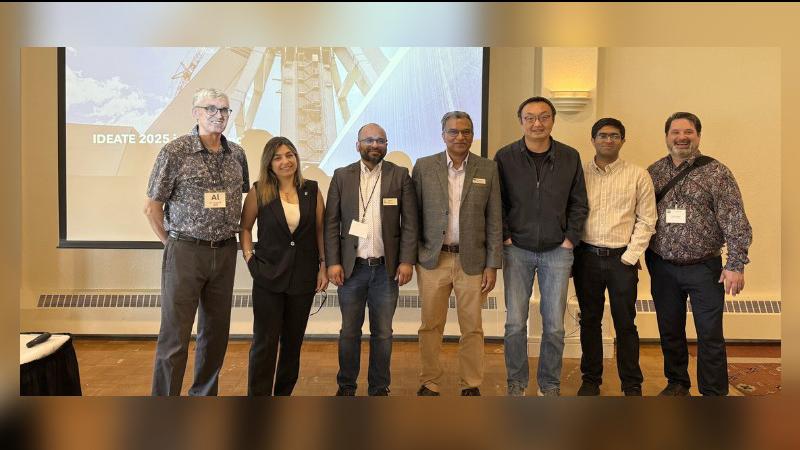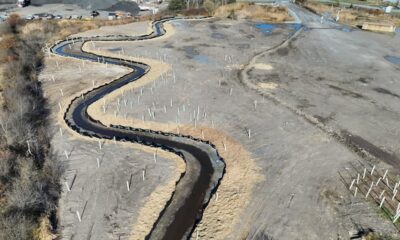Science
SaskPolytech Launches Research to Transform Mining Byproducts

In a significant move towards sustainable mining practices, SaskPolytech has announced three new research projects aimed at finding innovative uses for mining byproducts, particularly those associated with potash extraction. The federal government has invested $900,000 through PrairiesCan to support these initiatives, which involve collaboration with other polytechnics across western Canada.
Innovative Solutions for Byproducts
Canada is home to 11 potash mines, all located in Saskatchewan. While potash is primarily utilized as fertilizer, it also serves various alternative applications, including de-icing agents, pharmaceuticals, ceramics, and detergents. The extraction process generates tailings that are high in salt and often remain in piles. Rainwater can mix with these tailings, creating brine that poses environmental risks by contaminating soil and water sources.
“Saskatchewan’s mining sector is a staple of many of our rural and northern communities and is an economic driver for Canada,” said Buckley Belanger, Secretary of State for Rural Development. “When industry and our post-secondaries work together, like this partnership between P2INACLE and IMII, we solve real problems — quicker, safer, cleaner.”
The first project will explore the potential of combining potash tailings with fly ash and kraft lignin to develop sustainable building materials. Fly ash is a byproduct of coal combustion that enhances concrete strength and durability. Kraft lignin, derived from the kraft pulping process, can be used in composites and as a biosorbent for heavy metals.
Focus on Environmental Impact
Leading this project is Dr. Abu Kamal, a researcher at SaskPolytech. He will also oversee a second initiative that investigates the use of potash tailings in compost, aiming to return essential nutrients to the environment.
The third project will focus on the application of electromagnetic frequencies to develop an imaging system that can penetrate beyond the visible spectrum within potash mines. This research will assess how electromagnetic radiation interacts with different soil types to identify the most efficient frequency ranges for these applications. Dr. Abdul Raour, another prominent researcher at SaskPolytech, will assist in leading this effort.
The collaborative research network includes institutions such as NAIT and SAIT in Alberta, along with Northwestern Polytechnic, Red Deer Polytechnic, and RRC Polytech. Together, they form the Prairie Polytechnic Innovation Network Accelerating Commercialization for Local Ecosystems (P2INACLE), dedicated to advancing sustainable mining practices and enhancing local ecosystems.
As Canada continues to position itself as a leader in the global mining sector, these research initiatives reflect a commitment to innovation and environmental stewardship. With the support of the federal government, SaskPolytech and its partners are paving the way for practical solutions that can transform the mining industry while addressing pressing environmental concerns.
-

 Politics4 weeks ago
Politics4 weeks agoSecwepemc First Nation Seeks Aboriginal Title Over Kamloops Area
-

 World5 months ago
World5 months agoScientists Unearth Ancient Antarctic Ice to Unlock Climate Secrets
-

 Entertainment5 months ago
Entertainment5 months agoTrump and McCormick to Announce $70 Billion Energy Investments
-

 Science5 months ago
Science5 months agoFour Astronauts Return to Earth After International Space Station Mission
-

 Lifestyle5 months ago
Lifestyle5 months agoTransLink Launches Food Truck Program to Boost Revenue in Vancouver
-

 Technology3 months ago
Technology3 months agoApple Notes Enhances Functionality with Markdown Support in macOS 26
-

 Lifestyle3 months ago
Lifestyle3 months agoManitoba’s Burger Champion Shines Again Amid Dining Innovations
-

 Top Stories2 months ago
Top Stories2 months agoUrgent Update: Fatal Crash on Highway 99 Claims Life of Pitt Meadows Man
-

 Politics4 months ago
Politics4 months agoUkrainian Tennis Star Elina Svitolina Faces Death Threats Online
-

 Sports5 months ago
Sports5 months agoSearch Underway for Missing Hunter Amid Hokkaido Bear Emergency
-

 Politics5 months ago
Politics5 months agoCarney Engages First Nations Leaders at Development Law Summit
-

 Technology5 months ago
Technology5 months agoFrosthaven Launches Early Access on July 31, 2025




















